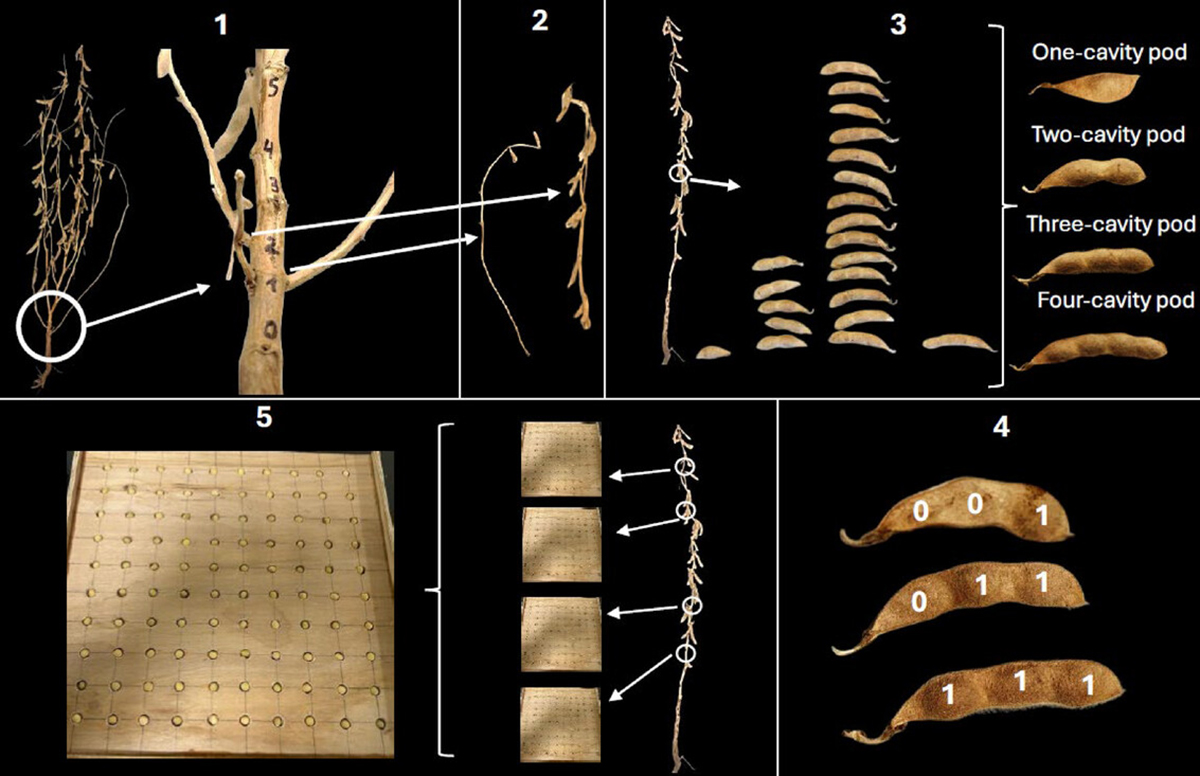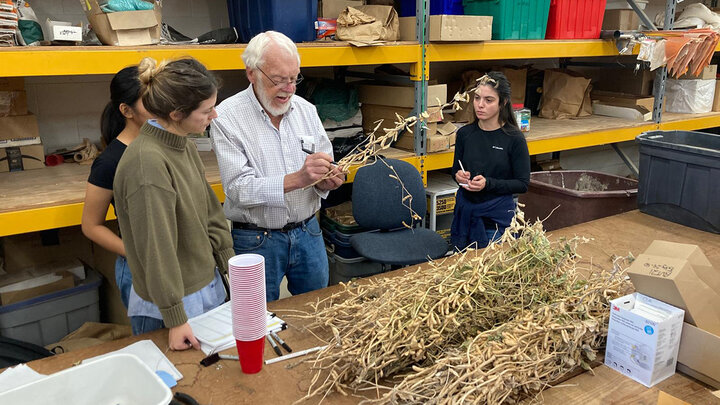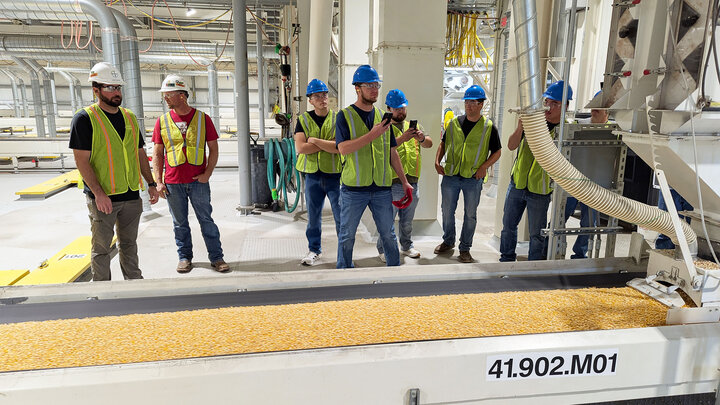A study by researchers at the University of Nebraska–Lincoln’s Department of Agronomy and Horticulture was featured Oct. 28 in the CSA News, “Nitrogen supply affects soybean yield differently within the canopy.”
Nitrogen (N) — a vital nutrient for soybean growth — is becoming a yield-limiting factor in high-yield potential fields due to mismatches between N supply and plant demand. To better understand this relationship, researchers studied nine high-yielding irrigated soybean fields across Nebraska under two treatments: one with no added nitrogen and another with full N supply.
Results showed that limited nitrogen reduced total yield by about 984 kilograms per hectare, including a 7% drop in seed number, an 8% drop in pod number, and an 11% decline in seed weight. While reduced N affected seed weight throughout the plant, its impact on seed and pod numbers was greatest in the middle and upper canopy.

Researchers determined seed number and seed weight of soybean plants growing in treatments where no additional N was added and where ample N was added. (1) Stem nodes were marked on each plant. (2) Branches were removed from each node. (3) Pods were removed and sorted into one-, two-, three-, and four-cavity pod types. (4) In each pod cavity, there was either a seed (Code 1) or no seed (Code 0). (5) A 100-seed count board was used to draw a random sample of seed to weight.
By analyzing yield components at every node, the study revealed that pod number was the main driver of seed number changes and that improving nitrogen distribution within the canopy could help optimize soybean yields.
The original journal article, “Soybean seed yield distribution within the canopy as affected by nitrogen supply” was published March 19, 2025 at American Society of Agronomy, Crop Science Society of America, and Soil Science Society of America's Wiley Online Library.



